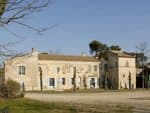
1. L'étang de Vaccarès à vélo - jour 1
Ce premier jour de randonnée à vélo vous amène sur la rive ouest de l’étang de Vaccarès. Parmi les grandes étendues, vous pouvez observer les flamants roses et autres oiseaux typiques de Camargue. Cette première approche facile est l’occasion de découvrir des paysages exceptionnels.
8 points of interest

Les cloches de l'église - ©Chloé Scannapiéco - PNR Camargue  Panorama
PanoramaThe fortified church of Saintes-Maries-de-la-Mer
True highlight of the Camargue (15 m), the church offers a breathtaking view of the village and all the Camargue. The 53 steps of a spiral staircase lead to the roof of the church where the panorama unfolds in all its splendour : up there, you can take advantage of a wide angle vision on the city, the sea and the ponds. Intense and sparkling blue of the Mediterranean Sea, purple hue of the Imperial pond The wind, the sun, the view of the calm expanse of the sea invite you to discover this landscape.

Anguille sortie du filet - ©Julien Faure - PNR Camargue  Fauna
FaunaThe eel
At the graus level (or passages), communication canals between the sea and the littoral ponds, you will find fish, towards the flooded sansouïre and the ponds or towards the sea. Migrating species include mullet, sea bass, but also sea bream, sole and especially eel. Born in the Sargasso Sea, she joined the Atlantic and Mediterranean coasts after a long journey. She comes to grow in the coastal ponds or rivers where she spends several years of her life.
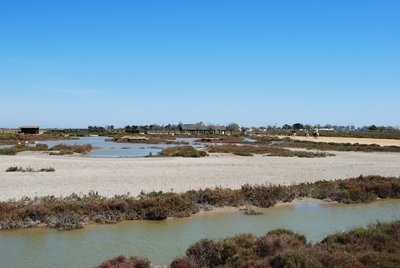
Le long de la draille de Méjanes - ©Chloé Scannapiéco - PNR Camargue  Panorama
PanoramaThe Departmental Reserve of Imperialists
Classified Departmental Reserve, Imperial and Malagroy Ponds were acquired by the Departmental Council of Bouches-du-Rhone in 1964 to protect these fragile natural environments (2,770 ha) which are home to many species of birds. The fishing, a traditional activity in Camargue, is practiced in the Imperial reserve in a boat without motor which imposes the use, as formerly, of the "partygue" (pole). Fishermen are looking for shrimps, eels.
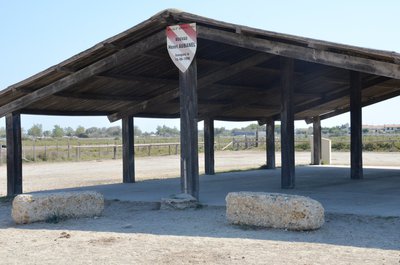
Manade Aubanel Baroncelli Santenco - ©Juliette Primpier - PNR Camargue  Patrimony and history
Patrimony and historyLe Bouvau d’Aubanel
The Baroncelli marquis, famous character of Camargue life, gave to his manade the name of Manade Santenco which means, in Provençal, manade of Saintes-Maries. At the death of the marquis, his son-in-law Henri Aubanel then manages the Santenco manade.. On June 15, 1996, the Saintes-Maries-de-la-Mer inaugurate the Henri Aubanel bouvau, a circular enclosure where bulls are grouped after selection. At the death of Henri Aubanel, his son Pierre manages the manade that he renames Aubanel Baroncelli Santenco manade.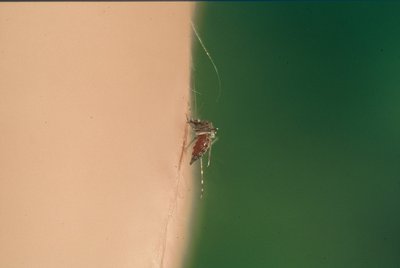
Moustique - Emmanuel Vialet - PNR Camargue  Fauna
FaunaThe Mosquito
There are 40 species of mosquitoes but only ten are biting. Females recover protein from the human blood that are necessary for the maturation of their eggs. They lay thousands of eggs on the soil dried up that are waiting, sometimes years, the rise of the waters to hatch. The mosquito is inconvenient for the man but it is useful to many species: dragonflies, fish, bats ... that feed on them. It is therefore an indispensable link in the Camargue biodiversity.
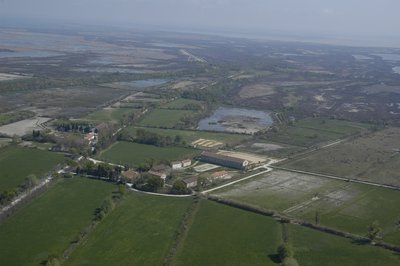
Opus Species - PNR Camargue  Water and rivers
Water and riversThe Consécanière pond
It is a place of passage and rest for many migratory birds In winter, ducks and coots find a relative tranquillity. This natural abundance motivated the need for protection by the Department of Bouches-du-Rhône as well as the Malagroy and Imperial ponds. The water level of the Consécanière pond is maintained artificially low by pumping, the pump rejecting the waters of the pond towards the Malagroy pond. The pond is surrounded by a wooded border of tamarisk.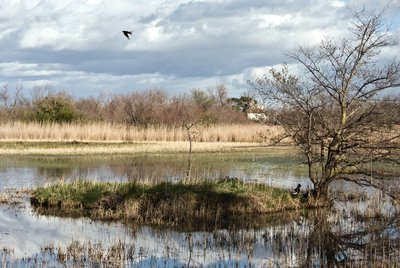
La Réserve de Camargue avec la Capelière au loin - ©Guillaume Caffier - PNR Camargue  Panorama
PanoramaThe Camargue National Nature Reserve
The Camargue National Reserve was created in 1927 by the National Society for Nature Protection (association) to protect animal and plant species. True heart of the Camargue, the Reserve covers 13,117ha, much of which is formed by the Vaccarès pond. The reserve offers many accomodation possibilities and tours: the Capelière, Salin-de-Badon and the lighthouse of Gacholle. The Capelière is the welcome point of the Reserve. You will find exhibitions, documentation, discovery trails. Entry authorizations for the observatories in Salin-de-Badon are issued at La Capelière.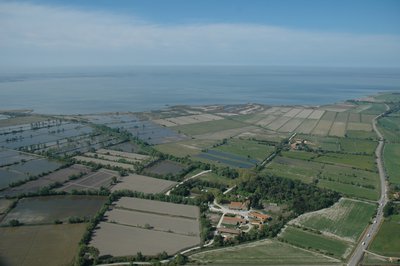
Grand Romieu, Mas Saint-Germain et Vaccarès - ©Opus Species - PNR Camargue  Panorama
PanoramaCultivated environments
The Camargue is both an extensive breeding ground (bulls and horses) but also a field crop area (rice and wheat). Cereal and oilseed crop growing areas occupy the uplands. The strong natural constraints that weigh on these productions require important investments in terms of irrigation and drainage. On the other hand, extensive rangeland systems are spread over natural environments (pastures, reed beds, marshes).
Description
Dos à l'Office de Tourisme sur l’avenue Van Gogh, se diriger à droite. Au rond-point, emprunter la deuxième sortie et traverser le village en direction de la route de Cacharel sur 4 km.
1 - A hauteur du petit parking, avant le mas de Cacharel, emprunter la piste des Cinq Gorges (dites de Méjanes) sur la droite. Poursuivre sur 11 km jusqu'au Domaine de Méjanes.
2 - Après le Domaine de Méjanes, au panneau "cédez le passage", se diriger à droite sur la D37 et continuer sur 8 km. Longer l'étang du Vaccarès. Passer devant le point d'observation du Mas neuf du Vaccarès (mis en place par le Parc naturel régional de Camargue). Après l’observatoire, continuer en direction d’Arles et de Salin-de-Giraud jusqu'à Villeneuve.
- Departure : Office de tourisme, Les Saintes-Maries-de-la-Mer
- Arrival : Carrefour D37 - D36B, hameau de Villeneuve, Arles
- Towns crossed : Saintes-Maries-de-la-Mer and Arles
Forecast
Altimetric profile
Recommandations
Respecter le code de la route sur les voies ouvertes à la circulation publique.
Rester vigilant sur la D37, route dangereuse et fréquentée !
L'itinéraire peut être effectuer en 2 jours ("A vélo, le tour de Vaccarès en 2 jour", continuer le parcours de Villeneuve aux Saintes-Maries-de-la-Mer par La Capelière), penser à réserver un hébergement en fonction de la distance à parcourir le premier jour. Contacter les Offices de tourisme des Saintes-Maries-de-la-Mer et de Salin-de-Giraud.
Se garer dans un endroit sécurisé.
Information desks
the Camargue museum
Mas du pont de rousty, 13200 Arles
Remember to visit the Camargue museum! It is located next to the administrative centre of the Camargue Nature Park.
OT Saintes-Maries-de-la-Mer - Tourisme en Camargue
5 Avenue Van Gogh, 13460 Saintes Maries de la Mer
Transport
Réseau de transport Envia : Ligne 20 > Arles/Les Saintes-Maries-de-la-Mer par Albaron (Porte-vélos gratuits) >> www.tout-envia.com; www.pacamobilite.fr
Access and parking
A 37 km au sud-ouest d'Arles, par la D570.
Parking :
Access
- Emergency number :
- 114
More information
Report a problem or an error
If you have found an error on this page or if you have noticed any problems during your hike, please report them to us here:

